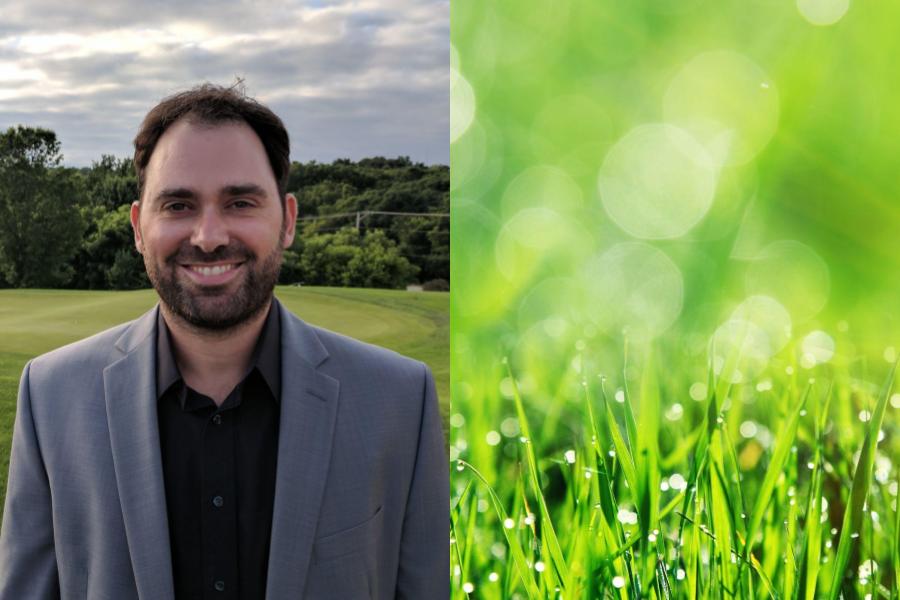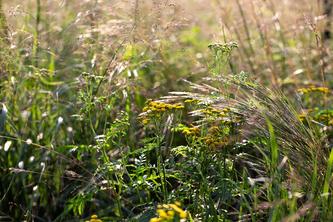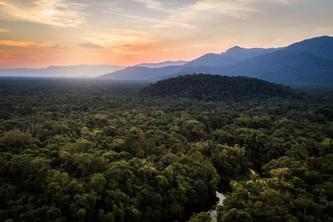
MINNEAPOLIS/ST. PAUL (05/17/2023) — We’re getting back into our yards and gardens, with pent-up demand following a long winter. University of Minnesota Extension Educator Jon Trappe has tips for yards that accomplish multiple goals, including promoting pollinators, climate action and a lovely look.
Q: Why do our yards matter?
Trappe: For many people, their lawn is their first and most frequent point of contact with nature. The benefits of nature-based therapy can literally be found in their backyard. They’re safe, convenient and private places for children and pets. Many people enjoy working in their yard as a hobby or as a connection to the outdoor world.
There are environmental benefits behind the turf that make up our yards. They protect surface and groundwater by serving as living filters. They grow well in suburban and urban areas that are often dominated by impervious surfaces, while helping cool these areas that tend to hold heat. Yards are incredibly efficient at storing carbon in the soil as organic matter, playing an important role as a carbon sink for greenhouse gasses like carbon dioxide and methane.
Q: Is No Mow May a good idea?
Trappe: No Mow May gained popularity to help promote good habitat for pollinators, a goal we can all support. The idea behind it is to not mow your lawn for the entire month of May. It is still unclear if there is a benefit to pollinators, but we do know that it could stress out your lawn. May is the one month where our grass grows the most, and by not mowing we could be stressing our lawns out going into the most stressful time period of the year - the summer. If you are interested in promoting pollinators in your lawn, we have found several species like Dutch white clover, self-heal, creeping thyme and ground plum can all tolerate mowing and provide excellent forage for pollinators.
Q: It’s more complicated than meets the eye. How do you do the right thing?
Trappe: Aim for a yard with grass 3 ½ inches tall or higher. That means letting it grow to 5 inches or more before mowing. One of the great things about letting grass get taller is that its roots will grow deeper, meaning it can withstand drought much better than shorter mowed yards. Letting grass grow higher also fends off weeds like crabgrass in your yard and helps you reduce your carbon footprint by using less fuel.
Q: Should I use lawn fertilizer? Are there organic alternatives?
Trappe: We encourage some supplemental fertilizer in lawns because it can help ensure a healthier turf. A healthier turf can be more resilient to stresses like foot traffic and allow the lawn to crowd out weeds like crabgrass. How much fertilizer to be applied can depend on a lot of things like the lawn species, soil type, or even how much shade you have. A good starting point is to have your soil tested. This will tell you the nutrient levels of your soil and the most beneficial type of fertilizer product.
From the plant’s perspective, it doesn’t care if the fertilizer is synthetic or organic. However, your soil might benefit from an organic-type fertilizer product. Check your soil test first. Many organic fertilizers have phosphorus, which cannot be applied unless the soil test shows phosphorus as deficient.
Q: What about watering, especially if we have a dry summer?
Trappe: Many of the grasses that grow in Minnesota or the upper Midwest can get by without any extra water beyond what nature supplies. The lawn may get a little dry and the turf may get a little tannish, but this is likely the grasses going dormant. If we go more than 30 days or so without rain, consider watering to keep the lawn alive until the next rainstorm. When the lawn is stressed from lack of water, try and stay off it to reduce stress and it should be able to bounce back just fine.
If you are going to water, don’t do it by a set schedule. By watering “deeply and infrequently”, you can actually train the grass roots to go deeper into the soil. This just means that if you are going to water, it is better to do it less often but with a higher amount. If you have an irrigation system, look into using a smart controller that can adapt to local weather conditions. It will save you water and make your lawn more resilient.
Jon Trappe has been a Turf Extension Educator for the University of Minnesota since October 2022. He grew up in Indiana and has lived in Minnesota for the past seven years. Jon is passionate about assisting homeowners and turf professionals manage their turfgrass areas more sustainably.
About “Talking...with U of M”
“Talking...with U of M” is a resource whereby University of Minnesota faculty answer questions on current and other topics of general interest. Feel free to republish this content. If you would like to schedule an interview with the faculty member or have topics you’d like the University of Minnesota to explore for future “Talking...with U of M,” please contact University Public Relations at [email protected].
- Categories:
- Agriculture and Environment
- Landscapes





